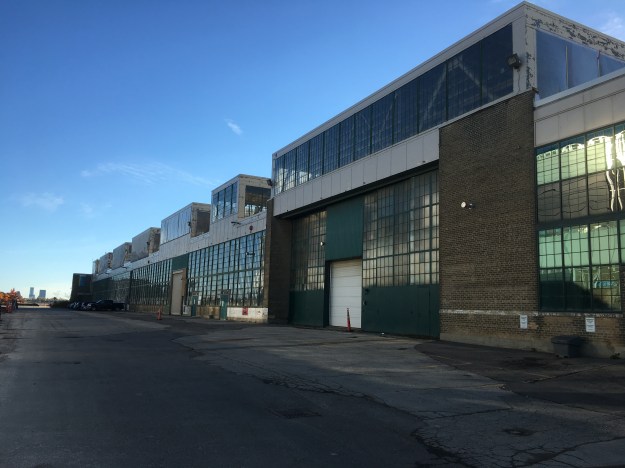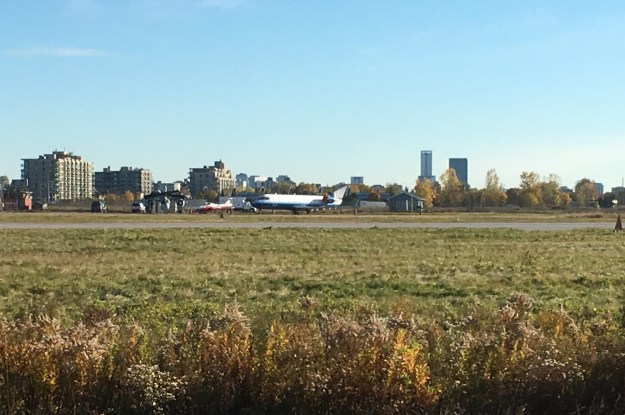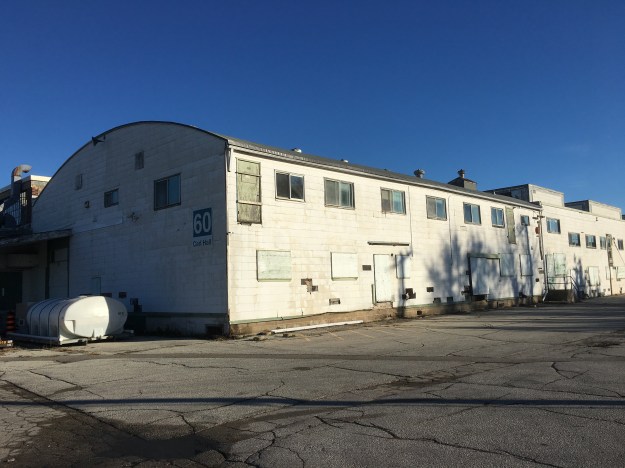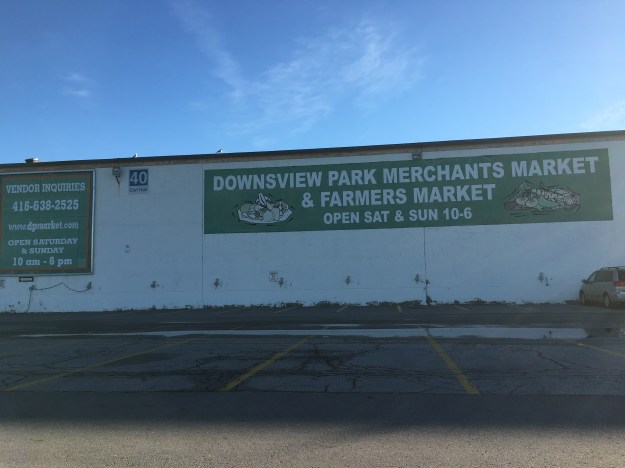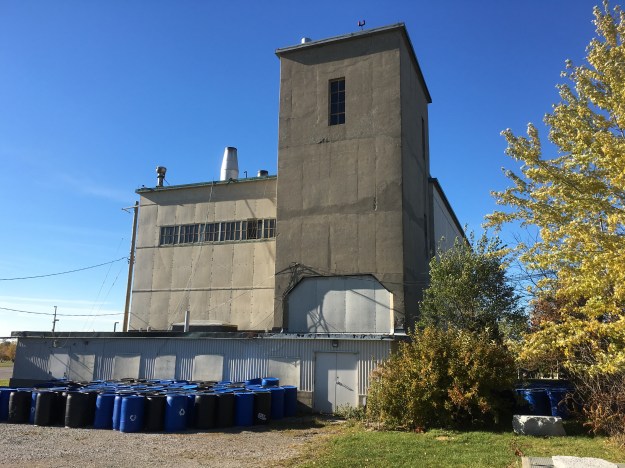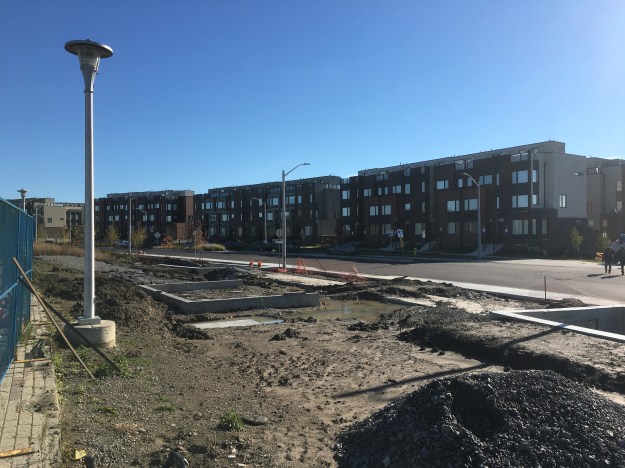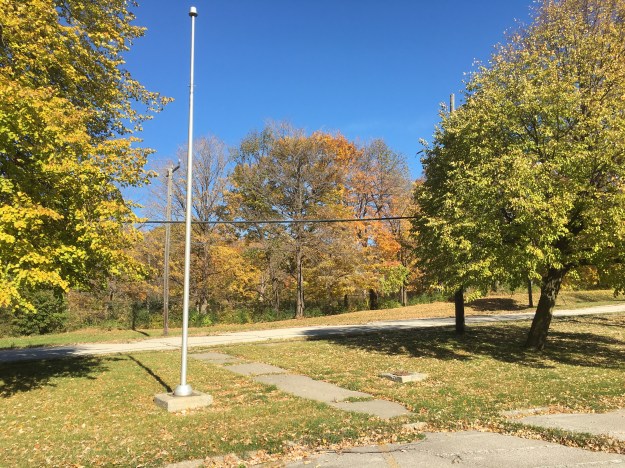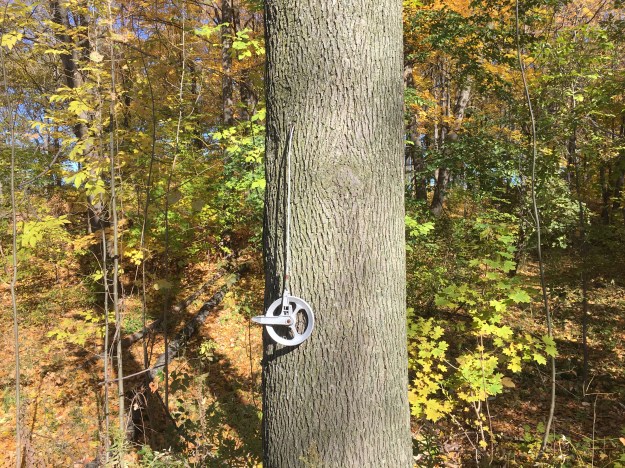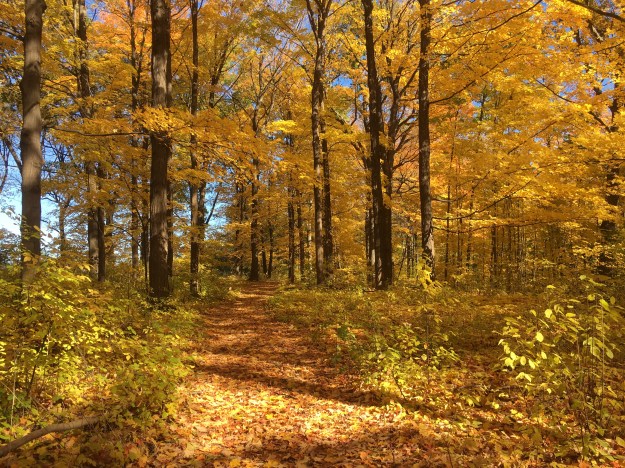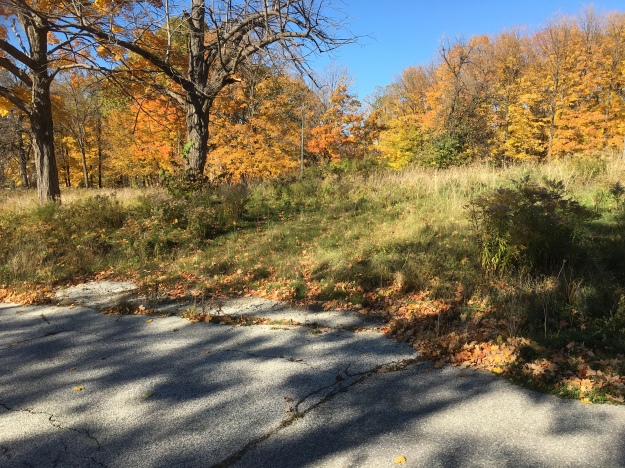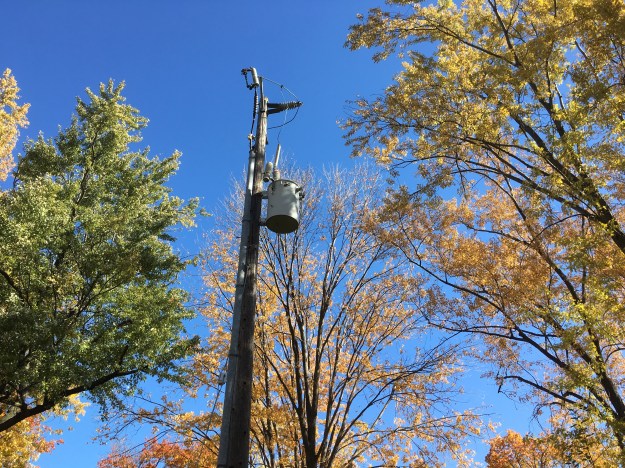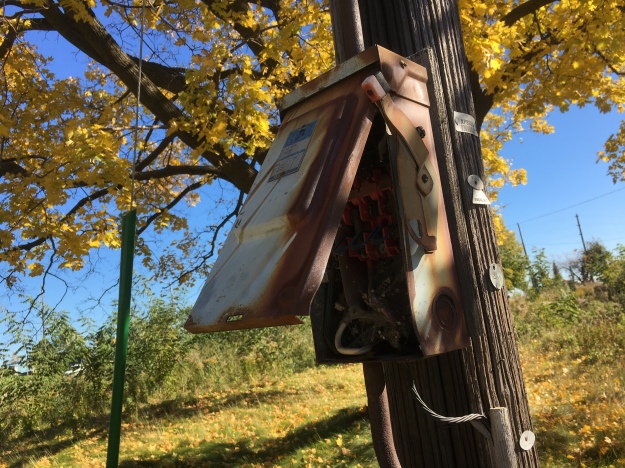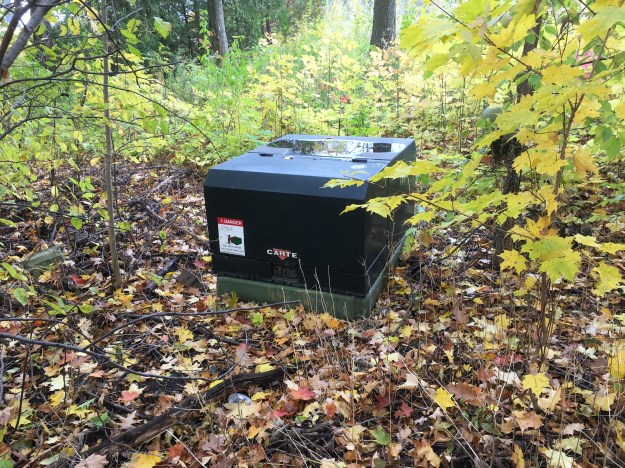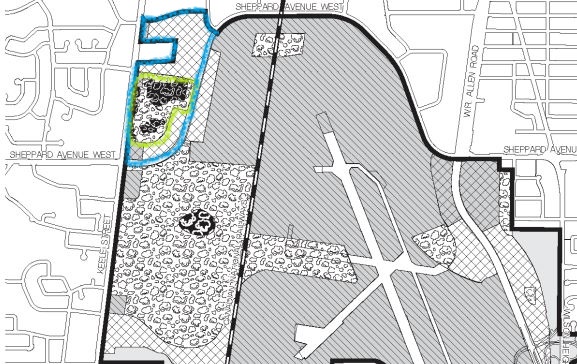Saturday, November 3, 2018
One of the GTA’s newer parks, Downsview Park is 291 acres of the former Royal Canadian Air Force Station Downsview. Last weekend we had investigated William Baker Park where a housing community had been built by the military. The woodlot has been preserved and can be seen as a rare original woodlot on the county atlas map below where it is circled in green. A detailed history of the military operations at the site can be found in a link at the end of this post. Many of the properties seen on the 1877 map were taken over for the air base including the property which is shown as Edward Boake (spelled Roake on the atlas). His homestead is circled in brown and shows the headwaters for the small creek that was used to form the lake in the new park. The atlas also shows two tollgates on what would become Dufferin Road. These tolls were levied on users of the plank road that had been built along this concession. More on the plank road can be found in this post. Beginning in 1995 plans were developed to turn the former air force base into a series of new residential communities and a new urban park to be called Downsview Park.
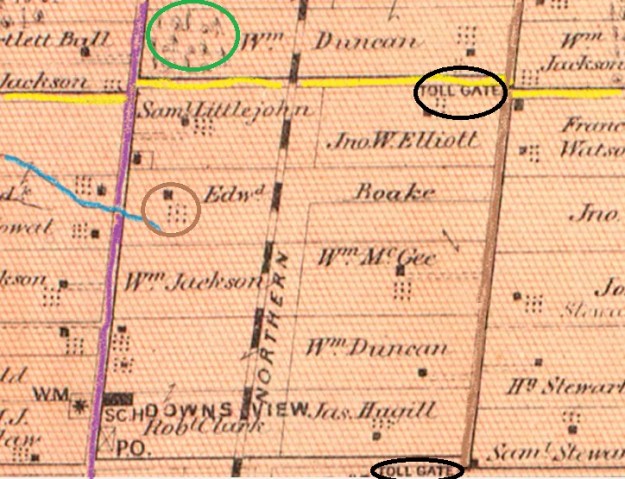
Several generations of the Boakes family farmed the family homestead before having it expropriated by the military for the air force base. The home stood until around 1962 when it was demolished. A few lines of mature trees in the new urban forest mark the outline of the front yard of the home.
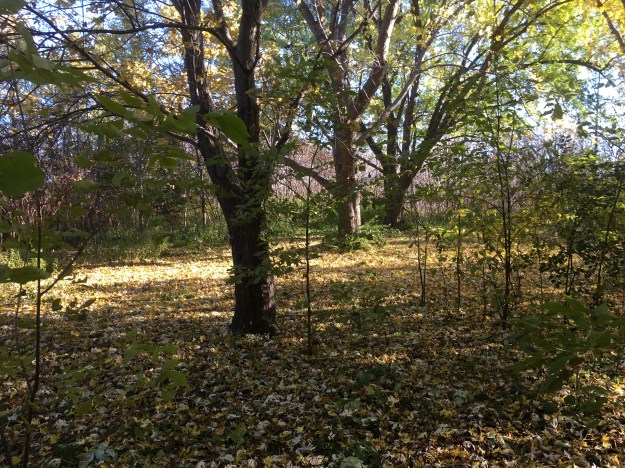
Forty-five acres are planned for urban forest in the park. The heart of this is the Boakes Grove which contains many mature trees but is not a mature forest. Most of the area around the Boakes home was open fields with just a few trees along the lane and fence lines. Silver Maples, Walnut and Black Locust are common here but most of the trees are very small and will mature into a nice forest over the next couple of decades.

The soil in the park was heavily compacted and full of pollutants and needed remediation before planting could begin. The soil was churned-up to a depth of 60 centimetres to loosen it up and provide aeration. Then, a 10-centimetre layer of composted leaves was spread on top to provide nutrients for growing the urban forest. Volunteers and community groups have planted thousands of trees in the park. There are 45 acres of parkland set aside for the urban forest which will mature over the next 40 years becoming a dynamic biosystem.
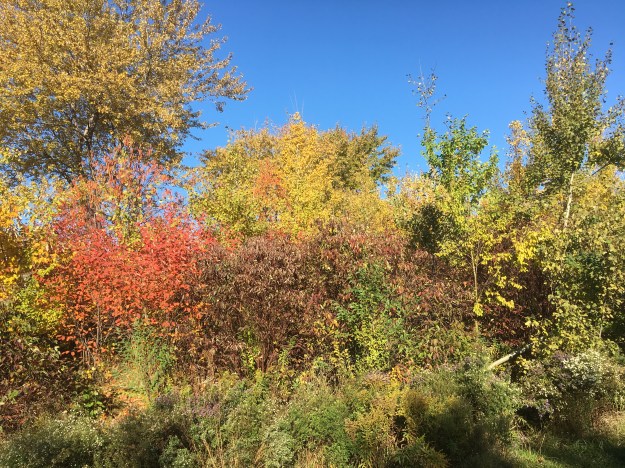
At the very heart of Downsview Park is a 9-acre lake that has been built as an integral part of the water system in the park. The lake is the final step in a water purification system to ensure the water is clean before it is discharged into Black Creek. The park has been graded to direct the flow of storm water and slow it down so the ground has time to naturally filter the water. It passes through a series of bioswales and filtration ponds. Finally it flows into the pond which is normally about 3-metres deep but which can rise and additional metre during storm events. The lake has a circuit path that allows you to stroll around the edge as you watch for the multitude of birds that call the park home. The lake sits on the headwaters of a tributary of Black Creek and can be seen marked in blue on the county atlas above.
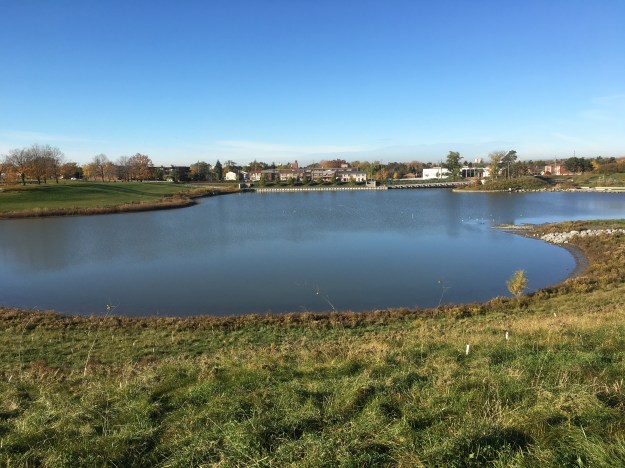
A row of mature maple trees in the middle of a field has a story to tell. The lake is brand new and most of the other trees are very young. When this was an active farm run by generations of Boakes trees didn’t grow in the middle of crop fields. Fence lines always provided a few feet of growing room and trees that got started there were left to grow. This particular line of trees marked the southern property line of the Boakes farm.

The orchard in Downsview Park is rather recent compared to the one that is shown on the property in the county atlas. Many of the original settlers planted orchards to help feed their families. Many of these early orchards still exist, at least in part. One of the better preserved ones can be found in Erindale. The original orchard on the Boakes property was, as usual, close to the house. The community orchard in Downsview Park was started in 2012 when 200 fruit trees were planted. A second major planting in 2017 has brought the total to over 400 trees. Apples, plums, apricots and pears now grow here to educate the community. Other gardens are scattered around the pavilion including a patch of blueberries that are not very common in the GTA.
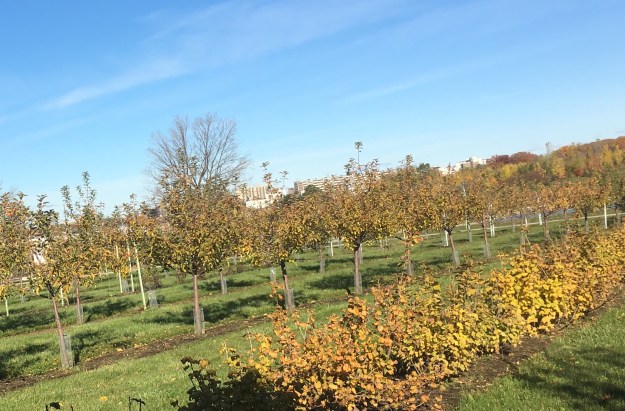
The land was originally chosen by de Havilland because it was flat and therefore suitable for aircraft manufacture because it could support a runway. Flying aircraft from the facility to their new owners is the most practical way to deliver the product to the end user. A large mound has been made, partially with soil excavated in the construction of the lake. An unofficial path leads up the side of the mound.

Climbing the mound gives you a panoramic view of the park and the city. Lake Ontario can be seen in the distance as you look south. The picture below looks toward Keele Street and the man-made lake.

There is plenty of wildlife in Downsview Park. This red-tailed hawk was seen along with a Cooper’s Hawk and a dozen smaller birds as we made our way around the park. Deer, coyote and a host of smaller mammals can be found throughout the woods and grasslands. This picture was taken the day before and shows the industrial buildings in the south of the park.

A gaggle of geese has gathered on the open field near the old central heating plant. Most of these geese will fly south for the winter but in this era of milder winters we are seeing more birds remain behind. Sometime they have a real struggle for food in the winter however, please don’t feed ducks and geese with bread. They don’t digest it and it bloats in their stomachs. This fills them up and prevents them from eating food which they can get nutrition from.

For the smaller children a new playground has been added with several aviation themed toys including a small airplane. The concrete pad around the playground has been painted to simulate a runway. Windsocks are commonly used at airports to provide visual clues to pilots concerning wind direction and strength. According to Transport Canada regulations the design of a windsock should cause it to perform consistently. A wind speed of 15-knots should fully extend a windsock. At 10-knots the sock should be about 5 degrees below horizontal, as the ones pictured below are. If the sock is 30 degrees below horizontal it means the wind speed is 6-knots.

This concludes our current series on Downsview Park. Click on the link for the story of the officer’s housing and the William Baker Woodlot. For the history of RCAF Downsview before the creation of the park you can click on the link above.
Google Maps Link: Downsview Park
Like us at http://www.facebook.com/hikingthegta
Follow us at http://www.hikingthegta.com



